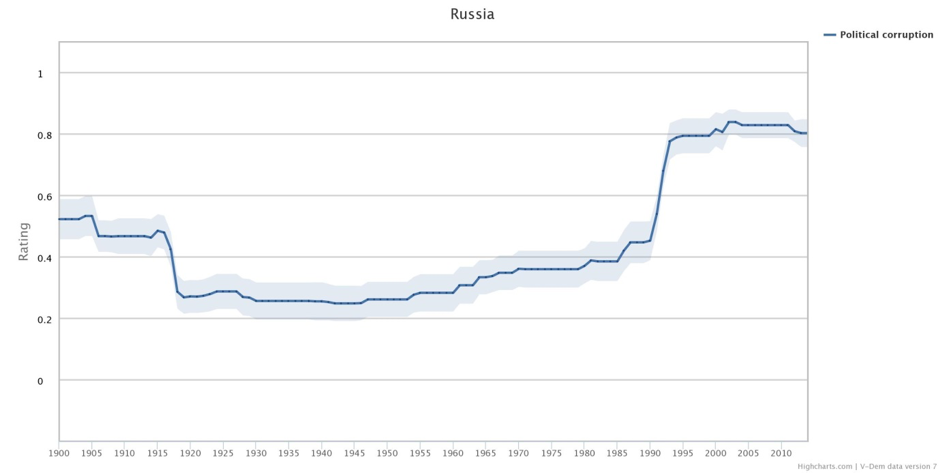Protests in Russia
By: V-Dem Staff
Jun 30, 2017
On June 12, Russian opposition leader Alexei Navalny called on Russians to take the streets to express their discontent with current corruption levels. Thousands of people took the streets of Moscow and other cities in the country and it was reported as the largest protests in years. At these anti-corruption protests hundreds of people were detained by riot police. This week’s graph will take a look at the political corruption in Russia since 1900.
The V-Dem Index on Political Corruption measures how pervasive political corruption is. It taps into several distinguished types of corruption –both ‘petty’ and ‘grand’; both bribery and theft, both corruption aimed at influencing law making and corruption affecting implementation – by including measures that cover both different areas and levels of the polity realm distinguishing between executive, legislative and judicial corruption.
In the graph we can see that the level of political corruption decreased substantially after the 1917 revolution and remained relatively stable during the communist era. At the fall of the Soviet Union we do see a sharp increase that later stabilizes on a relatively high level of political corruption, where Russia is still today.
To learn more about anti-system movements across the globe, use our online analysis tools at V-Dem.net.


